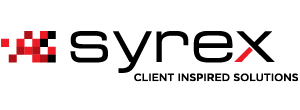 Welcome to the era of hyperconvergence
Welcome to the era of hyperconvergence
Ralph Berndt, Sales and Marketing Director at Syrex
The traditional view of hyperconverged infrastructure (HCI) sees it combining storage, computing, and networking into a single system. But in today’s connected world, this definition must extend to now include integrating everything on a software layer. Statistics show that 69% of organisations globally who have moved to the hybrid cloud have either already deployed HCI or are in the process of doing so. This reinforces the importance of HCI as the digital glue tying business operations together.
One of the strengths of this total HCI approach is the fact that business and technology leaders get line of site visibility from a singular dashboard. In recent years, the concept of IT management behind a single pane of glass has become commonplace, losing much of its lustre. However, HCI is the true realisation of this concept as it delivers this through the hyperconvergence of everything from an ICT perspective. Whether this is security, infrastructure, edge computing, even data management, the ‘new’ HCI is about delivering value through a completely unified approach to systems management.
PaaS-enablement
Much of the impetus behind HCI is the shift to a platform as a service (PaaS) approach in business. This cloud computing model sees third-party providers delivering hardware and software tools to users over the internet. The PaaS provider hosts everything on its own infrastructure, freeing the business from having to install its own in-house hardware and software to develop or run new applications.
Such is the importance of PaaS that it is projected to reach a market size value of $319 billion by 2030, up from the $44 billion in 2020. The adoption of PaaS in an organisation simplifies orchestration and heralds the move away from organisations having to invest in physical infrastructure. And when HCI is added to this equation, businesses have access to a more user-friendly interface that empowers them with the means to leverage off existing investments and capitalise on new ones derived from the availability of more advanced technologies.
But hyperconvergence goes beyond just PaaS and extends beyond software. It encompasses infrastructure and edge security through an integrated dashboard which businesses can use to deploy and manage all layers whether cloud-based, hybrid, or on-premises. Hyperconvergence permeates the entire ICT environment within an organisation to touch on every layer, virtual data centres, infrastructure as a service, and so on.
As an organisation, Syrex is committed to driving towards this integrated platform. While many of the building blocks to achieving this are in place, it is an ongoing process that will materialise in the near future.
Changing technology landscape
The organisational landscape is driven by software. Contributing to this is the normalisation of a hybrid working environment where people need to access mission-critical data from virtually any location. This new normal is here to stay. In the US alone, nine in ten remote-capable employees prefer some degree of remote work flexibility and six in 10 prefer hybrid work. Even in South Africa, the hybrid working environment has become increasingly accepted in industries beyond ICT and finance. This necessitates a cloud-focused way of delivering solutions to people spread across geographic areas.
And tying the multi-cloud and hybrid cloud environments together is HCI. This touches on all aspects of enterprise development. According to Gartner, the core capabilities for HCI software are virtual compute, storage, and networking, using a scale-out, shared-nothing architecture. Additional core capabilities include local, direct-attached storage in each node; enterprise-grade, high availability and mobility, for both compute and storage; enterprise-grade data services; and some level of choice in server and network hardware. In addition the provisioning of the security, virtual networking and the addition of disaster recovery and backup are just some of the benefits that can be orchestrated. And the management of these virtual resources and services can ultimately be driven by the unified, single pane of glass environment mentioned earlier.
Business sense
Fundamentally, HCI gives a business the opportunity to deploy a device on the edge, spin up features as needed, and scale down when done. The use cases will vary widely depending on the industry. But the golden thread is having hardware dependency falling away. HCI ushers in an era where the software-driven approach gives decision-makers the ability to be more fluid in how they solve business problems.
HCI provides companies with a straightforward path to a private cloud or hybrid cloud because it is a modern, software-defined infrastructure that can be quickly deployed and easily managed. It works well with hybrid cloud tools, enabling self-provisioning and portability for strategic workload placement.
At a time where agility and flexibility in operations become key competitive differentiators, HCI facilitates this by freeing up the organisation to focus on how best to deliver its business value and be less concerned about how technologies are implemented and managed. We live in a brave new world where connectivity, the cloud, and data are integrated across all levels of business. HCI brings about a more simplified way of enhancing the capabilities of the cloud and delivering immediate value for businesses looking to future-proof their operations.
